TerraN_EmpirE
Tyrant King
at 33 seconds in, Note the display in the cockpit that looks like F35 tech. A large MFD spanning the cockpit allowing reconfiguration and streaming data from across the bird.
ITEP engine is top pick to power US Army's FVL Light
- 07 APRIL, 2016
- BY: JAMES DREW
- WASHINGTON DC
One of the competing 3,000shp (2,240kW)-class engines being developed by leading propulsion specialists could eventually power a next-generation light assault rotorcraft being considered by the US Army, despite being procured specifically to re-engine the Boeing AH-64E and Sikorsky UH-60M in the late 2020s.
The $10 billion Improved Turbine Engine Programme (ITEP) is currently in source selection and the army will contract two manufacturers later this year for an extensive technology maturation phase.
The leading contenders are GE Aviation's single-spool GE3000 and the dual-spool HPW3000 being pushed by the Advanced Turbine Engine Company (ATEC), a joint venture between Honeywell and Pratt & Whitney, but there could a third option, likely proposed by Turbomeca.

US Army
The ITEP acquisition seeks 68 engines during development and 6,215 through procurement, according to a recent Government Accountability Office report. But that number could rise if the army proceeds with a single- or twin-engined Future Vertical Lift (FVL) Light rotocraft.
According to the army’s joint FVL/ITEP programme office, ITEP engines will more than likely power a next-generation light attack/reconnaissance rotorcraft, like the one described in the army's "capability set one" request for information (RFI) published in February.
Sikorsky officials have already stated that any proposed derivative of the S-97 Raider, which targets that armed reconnaissance role, would be compatible with, if not powered by, an ITEP engine.
Speaking to Flightglobal this week, FVL/ITEP programme office chief Richard Kretzschmar said the active requirement is to replace GE T700-series engine that powers today's Apache and Black Hawk helicopters, but it could also power FVL “capability sets one and two".
“Right now, looking at the requirements for FVL, we think that it’s certainly a candidate,” he says.

Sikorsky S-97 Raider
Sikorsky
There is not currently a programme of record for the development and production of a larger engine type in the weight class associated with capability sets three to five, which includes FVL Medium.
Kretzschmar says that class of engine would use some components matured through ITEP and the Future Affordable Turbine Engine (FATE) project – a science and technology effort for 5,000-10,000shp-class turboshaft and turboprop engines.
The medium-class Bell V-280 Valor tiltrotor prototype, for instance, is powered by two almost 5,000shp GE T64-419s, which also drive the heavy-lift Sikorsky CH-53. The Sikorsky-Boeing SB-1 Defiant demonstrator is powered by the Boeing CH-47 Chinook’s Honeywell T55. Both prototypes will fly in 2017 and target the medium category.

Bell V-280 mock-up at Heli-Expo
James Drew/Flight International
Kretzschmar says even though technologies for an improved engine in that class are being worked on, “there’s not yet the business case" to develop, certify and procure it.
Kretzschmar could not say how engine readiness would factor in the upcoming decision on which class of FVL rotorcraft - light or medium - will be acquired first. Current plans would field ITEP in 2024 and achieve full-rate production by 2027. The first FVL variant would be ready in the late 2020s or early 2030s depending on the requirement and resources available.
GE has already proposed derivative of the GE38 that powers the US Marine Corps’ in-development Sikorsky CH-53K King Stallion, with improvements ported across from the FATE project. Another solution might come from a future re-engining of the Chinook.
GE and ATEC have already produced and tested two ITEP protoypes and those competing solutions will undergo a 24-month preliminary design phase if selected later this year.
DOD encouraged to speed up FVL and buy more V-22s
- 21 APRIL, 2016
- BY: JAMES DREW
- WASHINGTON DC
Congressional authorisers want the US Army to consider options for accelerating its Future Vertical Lift (FVL) effort and have also told the Air Force to consider buying more Bell-Boeing V-22 Ospreys.
The US House Armed Services panel on tactical air and land forces says in its mark of the fiscal year 2017 defence policy bill that current funding levels for FVL are “inadequate”.
The legislative proposal, which will be considered by the full committee on 27 April, seeks a briefing by the army on its FVL and Joint-MultiRole Technology Demonstrator efforts. That briefing would include a status report on the Bell V-280 Valor and Sikorsky-Boeing SB-1 Defiant programmes as well as an analysis of “potential options and required resources” for accelerating FVL.
Sikorsky-Boeing SB-1 Defiant JMR prototype

Sikorsky
The directive comes as the army seeks approval from the Pentagon to begin a programme of record for Future Vertical Lift, which aims to introduce a next-generation family of rotorcraft with approximately twice the speed and range of today’s types. An analysis of alternatives will begin next year, if approved.
“With the exception of the V-22 Osprey, all US rotorcraft deployed in Iraq and Afghanistan were designed during or before the Vietnam War,” the panel notes. “The committee continues to support the development of future vertical lift aircraft and encourages the department to expand the prototyping programme.”

US Navy will place its first order for CMV-22 variants for the sea-based logistics mission in FY2018
Bell-Boeing
Regarding the V-22, the committee has encouraged the Air Force to consider buying more CV-22Bs and to add those quantities to an upcoming third multi-year procurement starting in fiscal year 2018. The CV-22B variant supports long-range infiltration, exfiltration and resupply of US special forces, but Air Force Special Operations Command has almost received its full allotment of 52 aircraft.
Without another near-term order, though, V-22 production in Philadelphia, Pennsylvania and Amarillo, Texas will dip below its current rate of 24 aircraft per year until V-22 orders from the US Navy (48 units) and Japan (17) enter main assembly around 2019 and 2020.
According to budget documents, the flyaway cost of a V-22 is expected to jump 39% from $71 million now to $99 million by fiscal year 2020 as throughput whittles down.
According to the committee, it would be cheaper to buy CV-22s off the multiyear contract than if the USAF decided to buy a handful later. More orders now would have the added benefit of lowering the unit cost for the other US services and international customers.

70mm Hydra rocket firing in 2014
Bell Helicopter/Textron
The committee also wants V-22 operators to develop a unified plan for arming the Osprey with defensive weapons, like forward-firing, belly-mounted guns, rockets and missiles. In late 2014, Bell-Boeing demonstrated forward firing of the Raytheon BGM-176 Griffin B missile and BAE Systems Advanced Precision Kill Weapon System, which uses 70mm laser-guided “Hydra” rockets. However, weapons integration is lower on US Naval Air Systems Command’s priority list than networking and communications gear, an improved engine inlet filter, ballistic protections, and a probe-and-drogue aerial refuelling system.
“The committee is concerned that given the emerging flexibility the V-22 has exhibited in multiple contingency and training operations, the aircraft may be unintentionally limited by its lack of defensive weapons and having to rely upon other airborne armed assets to provide escort during tactical airlift infiltration and exfiltration operations,” the legislation states.
Joint Multi-role Demonstrators in Race to Starting Line
, Defense News6:49 a.m. EDT April 28, 2016
COMMENTEMAILMORE
WASHINGTON — In West Palm Beach, Florida, and Amarillo, Texas, two different aircraft are coming together in a sprint to the starting line of the Army’s much anticipated flight demonstrations of future helicopter concepts in 2017.
The Army plans to design and field a future vertical lift aircraft and is expected to kick off that program of record in the 2019 time frame. The expectation is to buy a new family of helicopters through a competition and field the new aircraft at some point in the early 2030s, although the Army has talked about speeding up that fielding timeline to the late 2020s.
But first the Army plans to demonstrate Joint Multi-Role (JMR) air vehicle capability at a 2017 flight demonstration in order to help the service fully define requirements for the Future Vertical Lift (FVL) program.
A Bell Helicopter and Lockheed Martin team is mating the entire wing -- which is one big part -- onto the fuselage in Texas of its advanced tiltrotor concept the V-280 Valor, according to Vince Tobin, Bell’s vice president for advanced tiltrotor systems.
Sikorsky and Boeing have all of its Defiant coaxial helicopter parts in fabrication, some have already been delivered to the final assembly facility in Florida, Pat Donnelly, Boeing’s program director, said. Notably, the fuselage is in California being assembled and the team plans to conduct flight loads verification before shipping it to Florida.
Bell’s Tobin said the nacelles, compartments that hold engines, fuel or other equipment, were mated to the wing in March and they “fit like a glove.”
In fact, assembly of parts has gone so smoothly due to the use of 3-D design and simulation that Tobin, a self-proclaimed superstitious man, said, “Knock on wood, I am sure there are challenges to come, but so far, from a structural perspective, it’s all good.”
Bell had similar luck when Spirit Aerosystems assembled the fuselage for the Valor last year using the 3-D design environment. “It basically came together almost perfectly, Chris Gehler, director of the company’s advanced tiltrotor programs, said in October 2015.
The 3-D tool, which was developed in the last two to three years, has the ability to "change the affordability cost curve on this thing, so your non-recurring tooling significantly reduces and front-end costs are reduced," Gehler said.
Tobin said the tooling has also not caused any issues in the assembly process so far thanks to the 3-D simulations.
What’s left for Bell is to stuff the nacelles with gear boxes and engines and to get ready for restrained ground runs “by around this time next year,” Tobin said.
“The good news is everything to date is tracking as planned,” he added, and the aircraft should be ready for its first flight in the fall of 2017.
While Defiant is assembled, the Boeing-Sikorsky team is also testing all of its flight controls and software, electrical and hydraulic systems in its JMR System Integration Lab in Stratford, Connecticut, with real flight hardware, according to Doug Shidler, Sikorsky’s program director.
Raider, Sikorsky’s smaller version of Defiant using X2 technology, which is fully assembled and flying, has a similar SIL in Connecticut. The X2 technology demonstrated in 2010 was a 6,000-pound helicopter, Raider is 11,000 pounds and Defiant will weigh 30,000 pounds.
“The Systems Integration Lab is a very important part of our program for pre-flight and post-flight verification. It helps us ensure the best, most effective technology and capabilities are being brought to bear,” Shidler said. “The assembly and testing are proceeding well.”
It’s not yet clear whether the Army will first build medium-lift helicopters to replace UH-60 Black Hawks and AH-64 Apaches or if it will choose to prioritize building a light helicopter. The Army decided to retire its OH-58 Kiowa Warrior armed scout helicopters in 2013. Apaches are filling in on the armed scout mission, but it’s not an ideal solution as the helicopters are more expensive to operate -- much like taking a Lamborghini to go grocery shopping.
Both teams building demonstrator aircraft believe their solutions are easily scalable no matter what direction the Army decides to go.
Sikorsky has proven that it can build helicopters with the same technology in different weight classes.
And Bell has even designed and flew a tiltrotor unmanned aircraft system several years ago for a now defunct Coast Guard program, according to Tobin.
“The beauty of tiltrotors is they are eminently scalable,” he said. “From a scaling perspective, it’s not really a challenge so we are ready to go” with whatever the Army decides, he added.
AVX would replace heavy-lift Chinook with tiltrotor
- 30 APRIL, 2016
- BY: JAMES DREW
- WASHINGTON DC
The US Army is in no hurry to replace the venerable Boeing CH-47 Chinook that has carried its soldiers into battle since the Vietnam War, but when it does finally decide to move on, AVX Aircraft would offer up a 27.2t (60,000lb) tiltrotor replacement with 13.4m (44ft) propellers
The Benbrook, Texas-based advanced rotorcraft design shop counts several former Bell-Boeing V-22 Osprey aerodynamicist among its staff and they have concluded that a tiltrotor aircraft makes the most sense for a future heavy-lift cargo aircraft.
The team has been advancing several classes of twin ducted fan, compound coaxial rotor helicopters as potential next-generation rotorcraft for the US Army, and recently responded to the service’s request for information on potential mid-sized Future Vertical Lift types known as Capability Sets 3.
In that class, AVX offered the 11.3t (25,000lb) light/medium compound coaxial design that it has been maturing as part of the army's Joint MultiRole technology demonstrator project – essentially the precursor to FVL. It has forward lifting canards and would be powered by two Improved Turbine Engine Programme (ITEP) engines and dual ducted fans mounted forward of the horizontal tail.
This Capability Set 3 (CS3) concept comes in attack and utility varieties and is designed as a successor to the long-serving Sikorsky UH-60 Black Hawk and Boeing AH-64 Apache helicopters.
Above that weight class, however, AVX chief executive Troy Gaffey says his team would offer a tiltrotor solution, as is being pushed by Karem Aircraft with its optimal speed tiltrotor and Bell Helicopter – which would promote an up-scaled V-280 Valor type for "FVL Heavy".
The CH-47 is expected to be among the last current-generation helicopters the army will transition phase out in favour of a next-generation FVL design. AVX hasn’t completed any detailed work on its tiltrotor, but an artist’s rendering and some tentative specifications were provided to the US Army earlier this year.
“Our [compound coaxial helicopter] configuration, we feel really comfortable with for these first three capability sets,” Gaffey tells Flightglobal at the Army Aviation Association of America symposium in Atlanta, Georgia on 29 April. “We believe for Capability Set 4, which is really a CH-47 replacement, approximately, it’s probably logically a tiltrotor. Most of us at AVX were deeply involved in the V-22.”

AVX Aircraft
AVX proposed a tiltrotor for the US Defense Advanced Research Projects Agency’s Vertical Takeoff and Landing (VTOL) X-plane project that was won by the Aurora Flight Sciences Lightning Strike platform.
Gaffey says the AVX proposal was considered too mature to qualify as DARPA effort, but learning for that X-plane endeavour and the counter-rotating coaxial rotor AVX is supplying for Northrop Grumman's DARPA-sponsored Tactically Exploited Reconnaissance Node (TERN) ship-based VTOL patrol aircraft will inform the company’s FVL work going forward.
The company recent conducted a series of wind tunnel tests with a 1/10th-scale model of its FVL Capability Set 3 concept, which helped AVX work through some aerodynamic stability and drag issues.
Gaffey says further work will examine flapping and the separation between the rotor blades as well as the effect of downwash on the tail and ducted fans and how the design handles vibrations and loading.

James Drew/Flight International
Compound coaxial helicopters have long been a Russian pursuit, with the Kamov design bureau which produced the popular operational types like Ka-52 “Alligator” gunship. But the USA is gaining ground.
“We’ve benefited a great deal, by the way, from the Russian experience with coaxial,” says Gaffey. “I have a Russian textbook, written in Russian, in my office that I was given. I don’t read Russian, but I understand all the figures.”
Gaffey wants to press forward with large-scale wind tunnel testing of the company’s CS3 concept and hopes to build a dynamic, powered prototype that can be trial in the low and high-speed wind tunnel facilities at the NASA Ames Research Centre in California. That task is not currently funded, but Gaffey is “confident” it will be.
“That will be more proof for the configuration,” he says. “That will resolve issues and it will also give us more confidence in the analysis and analytical methods.”
Karem readies optimum-speed tiltrotor for FVL
- 01 MAY, 2016
- BY: JAMES DREW
- WASHINGTON DC
Sometime in 2018 or 2019, Karem Aircraft will power up what it believes should be the American military’s next vertical lift system, the company’s patented optimum-speed tiltrotor.
Best known as the creator of the modern military drone, the company’s founder and namesake Abraham Karem is now devoting his attention to vertical takeoff and landing tiltrotors, with blades that rotate at the most efficient speed during all phases of hover and forward flight.
The frontrunner for this optimum-speed system was the A160 Hummingbird UAV: created by Karem’s Frontier Aircraft and later acquired by Boeing Defense, Space & Security. It demonstrated a highly efficient helicopter configuration that flew past 18h during one test.
Karem’s next endeavour was to produce an unconventional cargo aircraft, dubbed TR75, under the US Army’s now-defunct Joint Heavy Lift (JHL) programme. It would have been larger than a Lockheed Martin C-130 and perhaps even manufactured at the same plant in Marietta, Georgia. TR75's cruise speed would be 330kts (611km/h) in airplane mode at 45,000ft.
That design was scaled down and converted into the UTR36 and ATR36 when in 2013 the army called for 13.6t (30,000lb) air vehicle concepts with a minimum speed of 230kts and full performance in high, hot conditions that could fly by late 2017. The army eventually picked the Sikorsky-Boeing SB-1 Defiant and Bell Helicopter V-280 over several competitors, but also retained AVX and Karem on research contracts.
That Joint MultiRole Technology Demonstrator (JMR-TD) flight test campaign that runs from 2017 to 2019 is a pioneering effort for Future Vertical Lift, a planned rotorcraft acquisition that is gaining momentum as combatant commanders call a new family of rotorcraft with far greater range, speed and survivability than today’s types.

UTR36 OSTR on display at the AAAA 2016 symposium in Atlanta, Georgia
James Drew/Flight International
Speaking to Flightglobal at the Army Aviation Association of America’s conference in Atlanta, Georgia on 30 April, Karem said his company has updated its TR36 design in response to a request for information notice issued by the army in February for technologies applicable to Future Vertical Lift Medium.
The RFI document for "Capability Set 3" contains a list of placeholder requirements for an aircraft that would eventually supplant the Sikorsky UH-60 Black Hawk and Boeing AH-64 Apache – designs that date back to the 1970s but remains the bedrock of US army aviation.
Karem won't discuss any of the design updates due to the highly competitive nature of FVL. The minimum performance specifications for CS3 was a 230-310kt cruise speed, unrefuelled combat radius of 229-450nm and full manoeuvrability in “high-energy, low-speed conditions” and hot, high altitude environments like in Afghanistan with a full complement of heavy troops, armaments and survivability equipment.
“We can’t talk about it, but you can imagine we’re not going to start something very, very different,” says Karem. “We’re working the technology hard and the components are our focus. Wings are wings, fuselages are fuselages, landing gears are landing gears, mission equipment is mission equipment. What we bring to the table is a configuration that is very, very efficient. The rotor components are very, very efficient, and the system of lift and propulsion we have about 30 patents on.”

Karem's ATR36 OSTR variant to succeed the Boeing AH-64 Apache
James Drew/Flight International
The company’s main focus today is on preparing its fully integrated hub and rotor solution for powered trials on a tiltrotor test stand. It’s expected to power on in late 2018 or early 2019, according to company and army officials. Karem wants to move faster but is limited by the amount of government funding available.
“We wish we could be flying next year, but we’re doing the core technology and all the hard stuff,” he says. “If I compare where we are to other people, I’d say I have all the analysis, I have all the designs, but it’s not there yet. We’re making it there.”
According to company data points, the dynamic components of UTR36 and ATR36 are "100% common". UTR36 would fly at 362kts up to an altitude of 45,000ft. Its self-deployable range is advertised as 6,500nm with auxiliary fuel tanks or 3,890nm without. It has approximately double the manoeuvrability of the Black Hawk at 80kts, twice the payload capacity, and five-times greater range. It features a pressurised cabin so that it can stay out of range of man-portable air-defense systems (MANPADs) and fly above bad weather.

Karem's heavily armed, fighter-like ART36
James Drew/Flight International
The company’s intent for UTR36 is FVL Medium, or CS3. The company doesn't want to pursue the lighter assault platform described in the separate, lighter-class Capability Set 1 (CS1) request for information.
“We can make a very, very efficient small aircraft, but if you want the heaviest aircraft that can go between two buildings 33ft from inside and go down that street, that’s not what we do,” says Karem. “We can build a 10,000lb aircraft and 250,000lb aircraft and they’ll all be efficient.”
Once the army moves forward with FVL and issues a formal request for proposals sometime in the next few years, Karem will be ready with an optimal-speed tiltrotor proposal that he says has every chance of winning over offers from big, established defence companies like Bell and Sikorsky – which is now owned by Lockheed Martin.
Advanced rotorcraft design shops like Karem, AVX and Piasecki would partner with aerospace manufacturers to deliver their concepts, and those teaming arrangements will be telling.
“We’re confident that when the army is ready to release an RFP, we will have a team to be competitive in that activity,” Karem's director of military VTOL business development Bruce Tenney says during the interview. “We’re very confident of that.”
A combined Future Vertical Lift/Improved Turbine Engine (FVL/ITE) programme office was established last year. The CS1 and CS3 RFIs were released in February and a “surprising number” of responses were received by 7 April, says FVL/ITE programme manager Richard Kretzschmar. He wouldn't confirm which capability set the army will pursue first – CS1 or CS3 – but says that decision will come soon.

Karem's TR75 Joint Heavy Lift proposal
Karem Aircraft
“I’m very encouraged to see the army really, really understanding that they need that big step,” says Karem. “How big the step is; it needs to be between big and huge. We’re on the huge side and big is other people.”
The Army Requirements Oversight Council will gather in the next few months to consider FVL. The army hopes to start a formal analysis of alternatives (AOA) at the turn of the fiscal year, pending a positive “materiel development decision” from the Pentagon’s top acquisition authority in October.
The army’s programme executive officer for aviation, Brig Gen Robert Marion, says a “milestone A” decision that would approve the programme’s entry into a three-year technology maturation and risk-reduction phase is due in early fiscal year 2021, following an extensive JMR-TD flight test programme. Full-scale development of the first air vehicle will begin in approximately 2024 and the first test aircraft should be ready to fly by early 2026, according to the PEO's timeline.
“It is very clear that the army and the nation need the kind of capability that FVL represents,” says Tenney. "We’re a [Continental United States]-based force primarily. We’ve got to deploy our forces to the theatre of operation and we don’t have a lot of forward-based forces anymore.
“You’ve got to have a vertical lift fleet that supports the land force, that can be globally self-deployable and can have the ranges, speeds and performance that FVL represents.”
Sea Valor?Thursday, 19 May 2016 00:59
Sea Air Space 2016 Online Show Daily - Bell Helicopter
SAS 2016: Bell unveils V-280 Valor naval variant
By Nathan Gain
As Bell Helicopter is moving forward with the Osprey integration in the US Navy under the Carrier Onboard Delivery program, the Fort-Worth-based rotorcraft manufacturer started preliminary studies on a naval variants of its future V-280 Valor tiltrotor aircraft. Navy Recognition learned during Sea-Air-Space 2016. A company representative stressed that no Navy requirements have been issued yet however.
Bell's V-280 Valor naval variant scale-model showcased at SAS 2016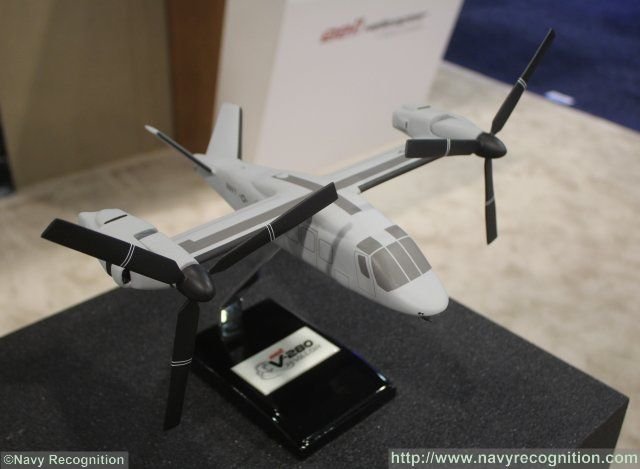
A modular platform, the naval version of the Valor will be able to perform wide range of missions: anti-submarine warfare, surface warfare, airborne mine warfare, utility and logistic missions, personnel recovery, counter fast attack craft and fast inshore attack craft. But according to Bell Helicopter, the Valor naval variant will come in two different versions : one operating from the DDG vessels and one utility variant for the CVN.
The DDG variant will be shortened by a few inches in order to allow the helicopter to fit in destroyer's hangar. This version will have an external payload capability of 8,000 lbs and will accomodate up to eight fully-equiped troops. The DDG compatible V-280 will have an operational radius of up to 2100 nm thanks to inflight refuelling capability.
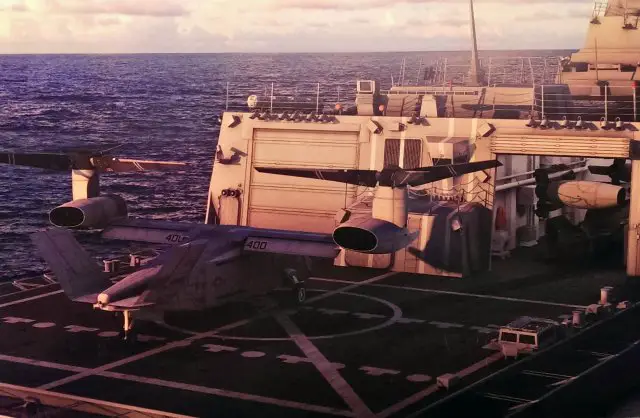
Bell Helicopter's artistic rendering of the DDG compatible V-280 Valor tiltrotor aircraft
(Credit: Bell Helicopter)
The CVN compatible variant will keep the same airframe than the US Army and will be primarly dedicated to utility and logistic missions. Cargo hooks will give it a lift capacity to carry a 10,500 lb, while the cabin will carry up to 12 troops.
Both variants will be designed for a cruising speed of 520 km/h and a 25,000 ft maximum ceiling.
The Bell V-280 Valor is a third-generation tilt-rotor concept being developed by Bell Helicopter and several industrial partners for the United States Army's Future Vertical Lift (FVL) program. In June 2015, Bell Helicopter's subcontractor Spirit AeroSystems began assembly of the composite fuselage for the first prototype V-280 Valor, which was delivered in September 2015.
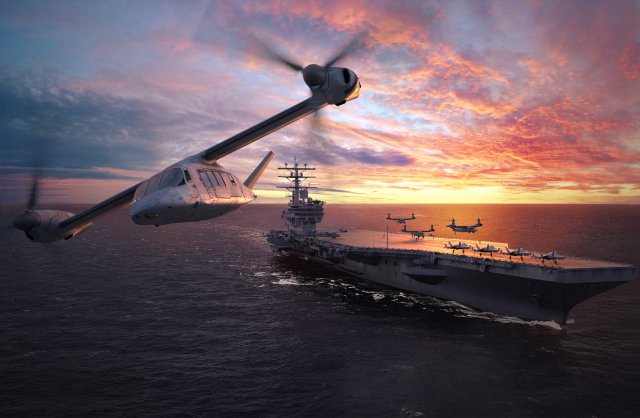
An artistic rendering of what could become the naval utility variant of the V-280 Valor
- , , , ,
By on May 23, 2016 at 1:09 PM
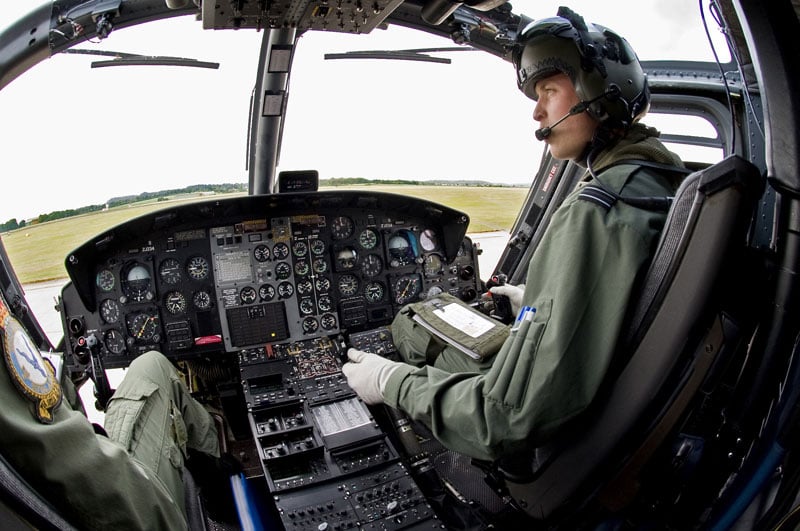
Prince William in Griffin helicopter
WEST PALM BEACH, Fla.: The United Kingdom is following the U.S. (JMR-TD) project with “great interest” and might either get involved at some point or buy future aircraft the effort spawns, says a top British Defence Ministry rotorcraft engineer.
“It’s a perfectly feasible outcome,” Bryan Finlay, the senior engineer at the UK’s Defence Science and Technology Laboratory, said Wednesday at the American Helicopter Society International’s annual forum. He was replying to a question I put to him.
Finlay said during the panel that the UK has decided it will replace its army’s and its navy’s medium-lift helicopters in the mid-2030s. The JMR-TD aims to prove technologies for a new more capable medium-lift vertical takeoff and landing aircraft to go into operation by 2034. Under the JMR-TD, Bell Helicopter’s new and Sikorsky and Boeing’s new are to fly next year to start validating new technologies and designs.
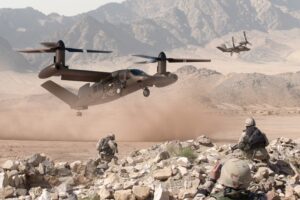
Bell V-280 Valor Joint Multi-Role Demonstrator
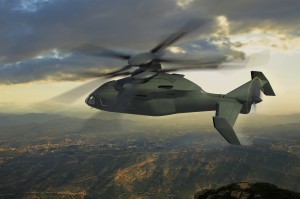
Sikorsky-Boeing SB-1 Defiant concept
“Right now we don’t know what the Joint Multirole program’s going to deliver in terms of a platform,” Finlay noted. “Therefore we would wait with great interest.”
But when asked if it was reasonable to expect the UK military to get “involved in some of the deliberations” as the JMR proceeds, Finlay replied: “Absolutely. I think at a military-to-military level that they already have.”
UK and U.S. science and technology engineers such as himself already have, Finlay added. “The S&T guys, we talk to each other all the time, and we’re interested in the geeky stuff, and that’s not a problem,” he said. “But the key to unlocking capabilities is really the military-to-military contact and their understanding. And then of course the politicians.”
Aw, probably makes too much sense.
Full disclosure: The American Helicopter Society International paid for Breaking Defense’s lodging during Forum 72.
Australian Army Sends Envoy To U.S. Future Vertical Lift Talks
Aug 5, 2016 | Aerospace Daily & Defense Report

V-280: Bell Helicopter
As some of America’s most sophisticated airborne weaponry—including the , Growler, , MQ-4C Triton and Amraam—head to Australia, Canberra is now saying g’day to the next generation of military rotorcraft being designed in the U.S. for Future Vertical Lift (FVL).
The Australian Defense Force (ADF) confirmed on Aug. 5 that the U.S. Army has formally invited it to participate in early discussions about FVL as the requirements are still being cemented. The soon-to-launch program seeks to usher in a new era of long-range, high-speed rotorcraft for the 21st century. It will produce a successor for all traditional helicopters in different size classes for all of the U.S. services, including long-serving Black Hawk, AH-64 Apache and Chinook aircraft.
Australia—the world’s sixth-largest importer of military equipment and a strategic U.S. ally in the Asia-Pacific region—rivals Israel in its pursuit of high-end American armaments. It is often quick to partner with emerging U.S. programs early in the requirements development stage like it did with the Joint Strike Fighter, Triton and Poseidon.
In this instance, Australia is sending a high-ranking army officer to participate in FVL discussions as the U.S. military rotorcraft community prepares to launch into its first Army-led FVL program of record.
Canberra is not paying to participate and is not a formal member of the FVL group, but as a longtime Black Hawk and Chinook operator, it will probably want whatever vertical-lift aircraft spins out of the program.
“The Australian and U.S. armies share an interest in the development of the future vertical-lift capability. As such, the U.S. Army has invited the Australian army to participate in an exchange of ideas in order to understand and prepare the next-generation of helicopters,” the ADF tells Aviation Week. “This exchange of ideas assists the Australian army to meet our future requirements as outlined in the 2016 Defense White Paper, and is occurring without a financial arrangement, membership or any other commitment from the Australian army. An Australian army lieutenant colonel, in his capacity as a liaison officer, is attending the U.S. Army forums to better understand and inform our army as to the U.S. approach.”
The statement confirms that Australia has become the first nation to dip its toes into the still-cool waters of FVL, seemingly undeterred by its protracted and expensive involvement in the multinational F-35 development effort that will introduce the ’s first stealth fighter.
ADF says it is “privileged to be actively involved in the development of the next generation of the vertical-lift capability,” while making the point that no acquisition decision has been made and the Australian government will make those determinations “at an appropriate time.”
Confirmation of Australia’s participation in FVL discussions comes as the U.S. Army seeks a material development decision from the Pentagon that will trigger an analysis of alternatives for the first tranche of military rotorcraft to be produced under FVL. Once it hits full stride, FVL will be the second-largest military acquisition next to the F-35.
The service is currently partnered with and a -Boeing team for flight demonstrations of their competing V-280 Valor and SB-1 Defiant prototypes as a risk-reducing exercise. The military has also teamed with smaller design shops to test innovative vertical-lift concepts in the laboratory, like Karem’s optimum-speed tiltrotor and AVX’s coaxial compound helicopter.
A formal competition for a three-year technology maturation phase will begin in fiscal 2019, to be followed by a full-scale, six-year development effort in 2024. The Army expects to deliver the first war-ready FVL combat squadron in early 2030, although many in industry want the Army to move more quickly.
I LIKE that naval variant. I want a ASW and an AEW version of them...pronto!Sea Valor?
Given the Offerings to the Army have provisions for arming I don't see why a Light Airborne Multi-Purpose System version, an SV280 ASW as it were,
